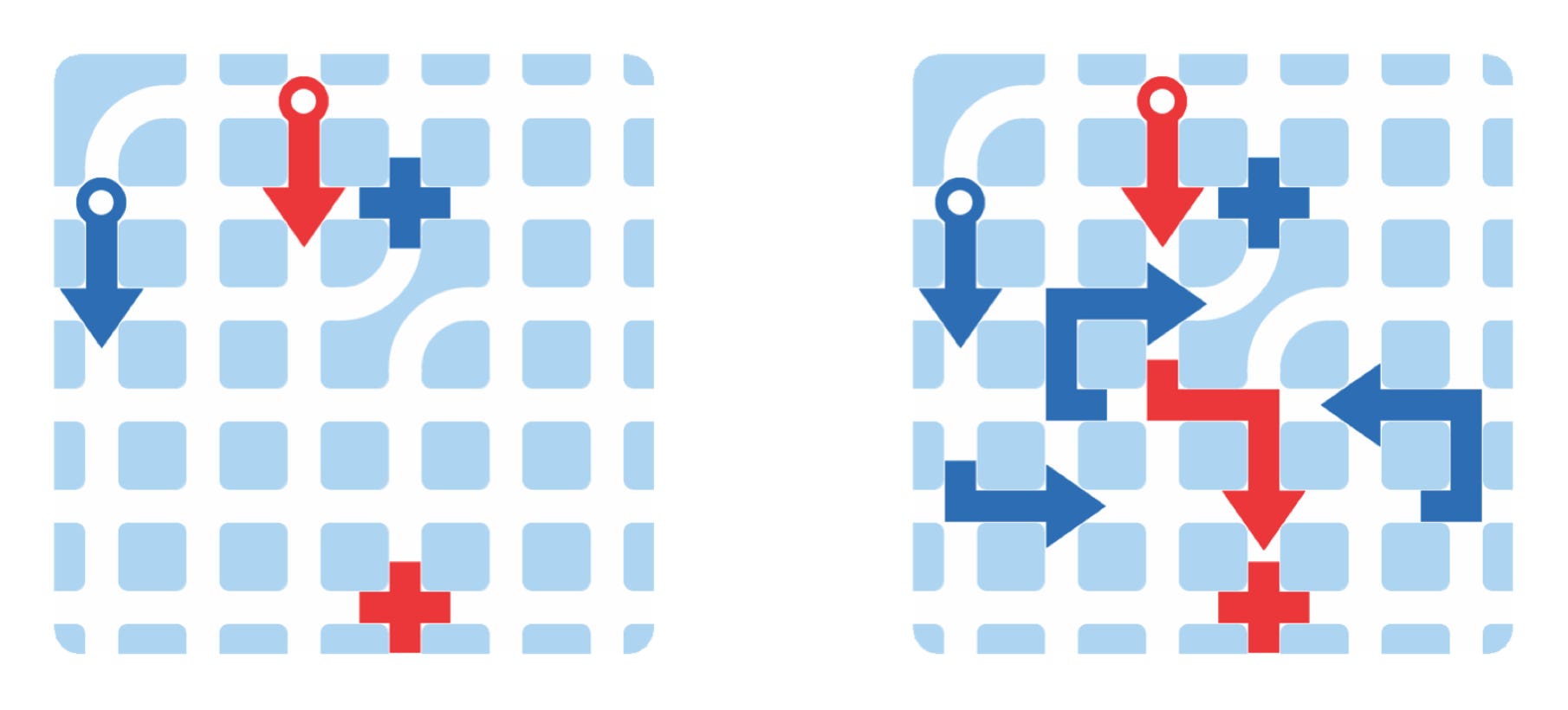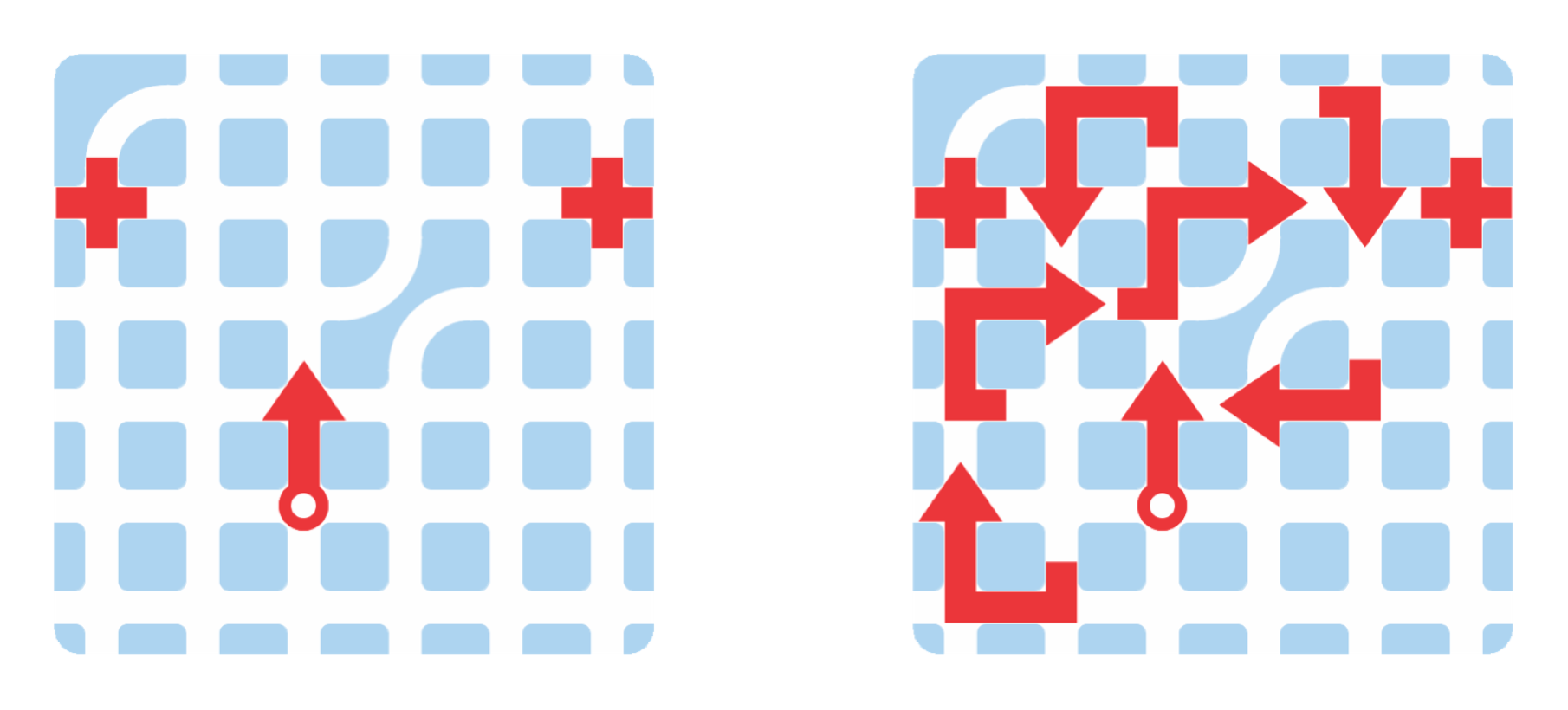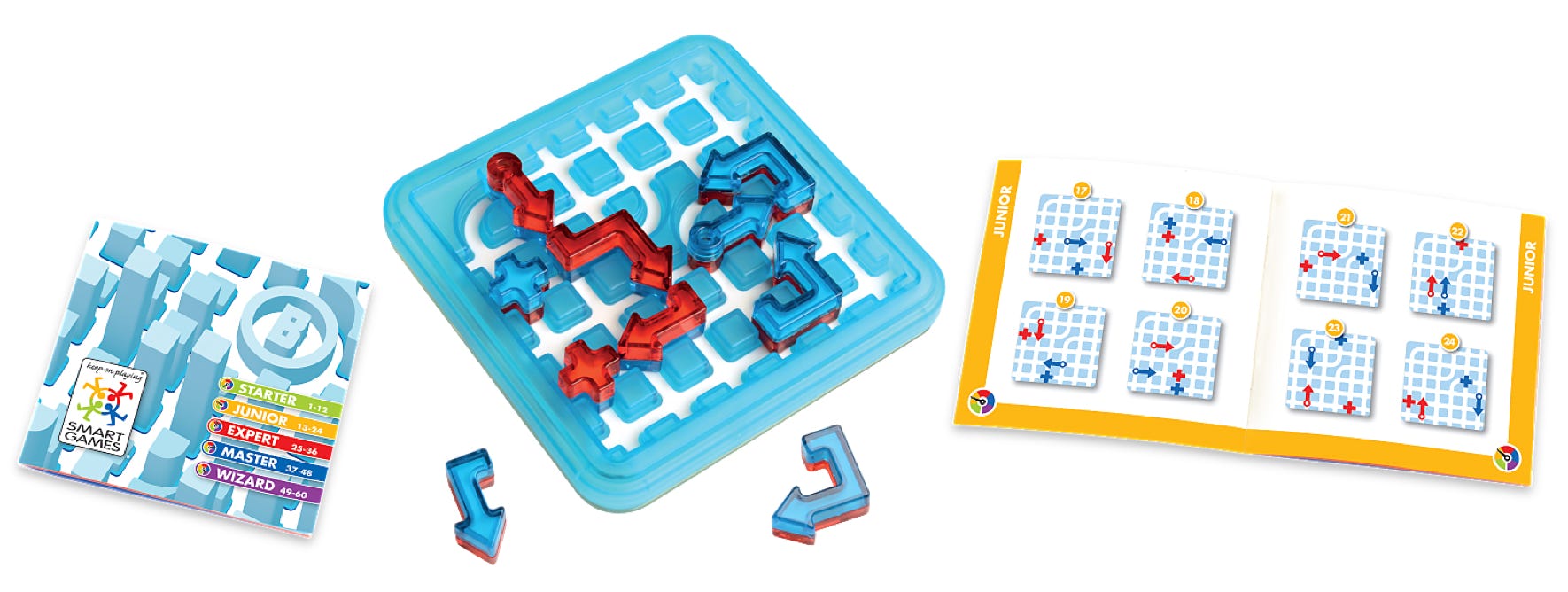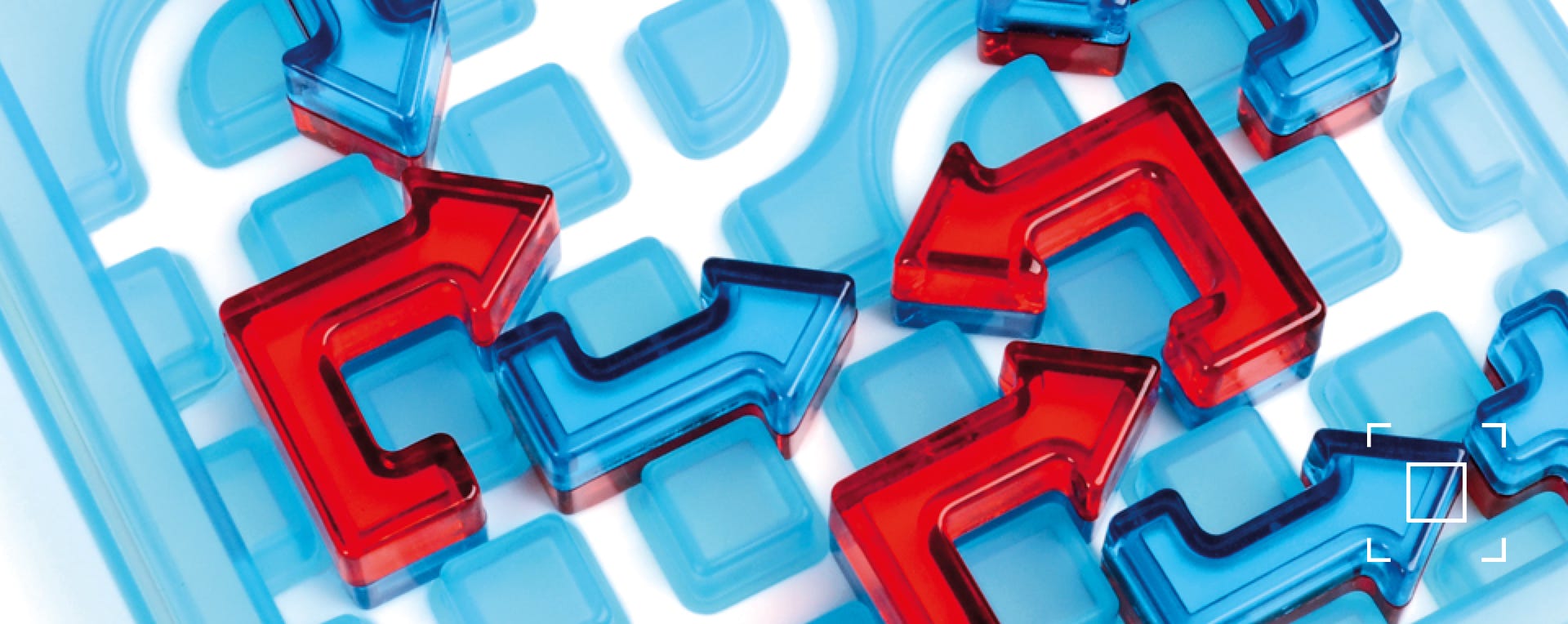City Maze
The story behind the creation of City Maze
Raf Peeters, January 2014
City Maze is my favorite new SmartGame for 2014. I had the basic concept for this puzzle game already many years ago. But I never managed to translate this idea into a product until now. And the resulting challenges are even better than what I anticipated.
YOU HAVE REACHED YOUR DESTINATION
The original idea was to make a route finding puzzle, with a figure that had a start and end position. The movement of the figure would be limited to a few “instructions” he could use only once. Such an instruction could be: “go straight forward until your path is blocked and then turn left”. The problem with this concept was that players could easily make mistakes. Because left and right are “relative” to the position of the figure. This is something that not only children but also many adults find difficult. I remember for example that my wife always needed to rotate the map when she was giving me directions in the car (in the days before we had a GPS). For many years I tried all kind of different ideas and finally I solved this puzzle by reversing the concept: instead of moving a figure using “virtual” instructions, I made the instructions “physical” and the movement of the figure “virtual”.
CAN YOU FIND THE RIGHT PATH?
The object of City Maze is to create a route between a starting point and a destination. You do this by placing arrow shaped puzzle pieces onto a grid (that represent the streets of a city). You always follow the path of the street, until your route is changed by an arrow. So puzzle pieces don’t need to touch each other in order to create a route. It’s something I learned many years ago during driving school: If the teacher doesn’t give any new instructions, just follow the road in the same direction.
As always I wanted to create as much variation as possible between the different challenges. To do this, there are two options you have as a designer. The first option is to start with a large grid and to use extra blocking pieces to alter this basic layout for each challenge. People who are familiar with my other designs for SmartGames know that I seldom work this way. One of the disadvantages is that the more pieces you need for a puzzle, the more pieces you can lose or place wrong during setup. In order to create enough variation between challenges with fewer puzzle pieces, I needed to use them smarter. The 6 arrow shaped puzzle pieces are double sided. One side is red, the other side is blue. Each side can only be used for one colored route. But the options you have for blue routes are different from the options for red routes. For example blue routes have 2 left turning arrows, but no right turning ones. For red routes, it’s exactly the opposite.
The grid is compact and has a few curves on very specific places. This makes it possible to create a lot of completely different challenges, only by changing the position of the start and destination pieces. It also makes setting up a new challenge something simple and quick. Finding the right layout for the grid with the right balance between possibilities and limitations was the most time consuming part of the design process.
TOO MANY GOOD CHALLENGES
Long after we decided which game rules, grid and puzzle pieces we were going to use, something unexpected happened (I always like that). The computer program created too many good challenges. Originally I planned on using only challenges where you needed to create two routes (one blue and one red) at the same time. These seemed the most interesting, because for each puzzle piece you had to decide which side you were going to use. So although you only have 6 puzzle pieces, you have 12 options to choose from. But the challenges with a route in just one color also proved to be interesting, especially if that route had two destination. What makes these challenges hard, is that you don’t know in which order you need to pass both destinations. Instead of trowing away something good, I decided to keep both kind of challenges. That’s why this game includes 2 booklets, each with 60 challenges from easy to expert. Booklet A (“on the double”) has only challenges with two different colored routes, booklet B (“Delivery Express) only challenges with either red or blue routes.
The only downside of this is that the game was designed to store just 1 booklet, not for 2. So when you travel, you will need to decide which booklet you will take with you or need to use an elastic band to keep the lid closed when you want to include both booklets underneath the lid. But the upside of this is that you get 120 challenges, much more than what other SmartGames in this price range offer.

top: example of a Wizard challenge (left) and solution (right) of a challenge with two different colored routes.

top: example of a Wizard challenge (left) and solution (right) of a challenge with one route and two destinations.


GAME RULES CITY MAZE
City Maze includes two booklets with two kinds of challenges. Each booklet has different levels, from STARTER to WIZARD:
• "Express Delivery": In these challenges you must create a route for one person (blue OR red), with one or two different destinations. You go through the first destination to get to the second destination.
• "On the Double": In these challenges, you must create routes for two different people (blue AND red) at the same time, guiding both to separate destinations.
1) Place the start positions and destinations on the game board as shown in the selected challenge. The start positions are indicated by a circle on an arrow and start in the direction of that arrow. Destinations are indicated by a cross-shaped piece.
2) Create routes by placing arrows on the game board, connecting start and end positions that are the same color:
A) A route always follows the path of the current street until the direction is changed by an arrow that is the same color. Puzzle pieces of the same color do not have to touch each other in order to create a route.
B) A route only changes direction if it first encounters the back of an arrow in the same color. Then the route is changed to the new direction shown by the arrow. A route is never changed by an arrow of the other color, nor is it changed by an arrow that is the same color unless it encounters the back end first.
C) Puzzle pieces (arrows, start positions and destinations) do not obstruct any route. Routes can pass through these pieces. Players can cross routes and even double back along the same route in the opposite direction.
D) For the "Express Delivery" challenges there may be two destinations. Passing through the first destination does NOT change the direction of the route. Your route will go straight through the first destination, only changing directions at the next arrow piece or turn in the road.
E) Each puzzle piece has two sides, red and blue. For the "On the Double" challenges, each puzzle piece can only be used for one colored route. You have to figure out which arrows to use for the red route and which ones to use for the blue route.
F) Puzzle pieces cannot be placed on top of each other and can’t overlap the border of the game board. G) Using all puzzle pieces is not required to complete the challenges. Some solutions will only require 2 arrows, while other solutions will require all 6.
3) There is only 1 possible solution for each puzzle, solutions are found at the back of the booklets.
Website ©2014 Raf Peeters
Products and images: © Smart
